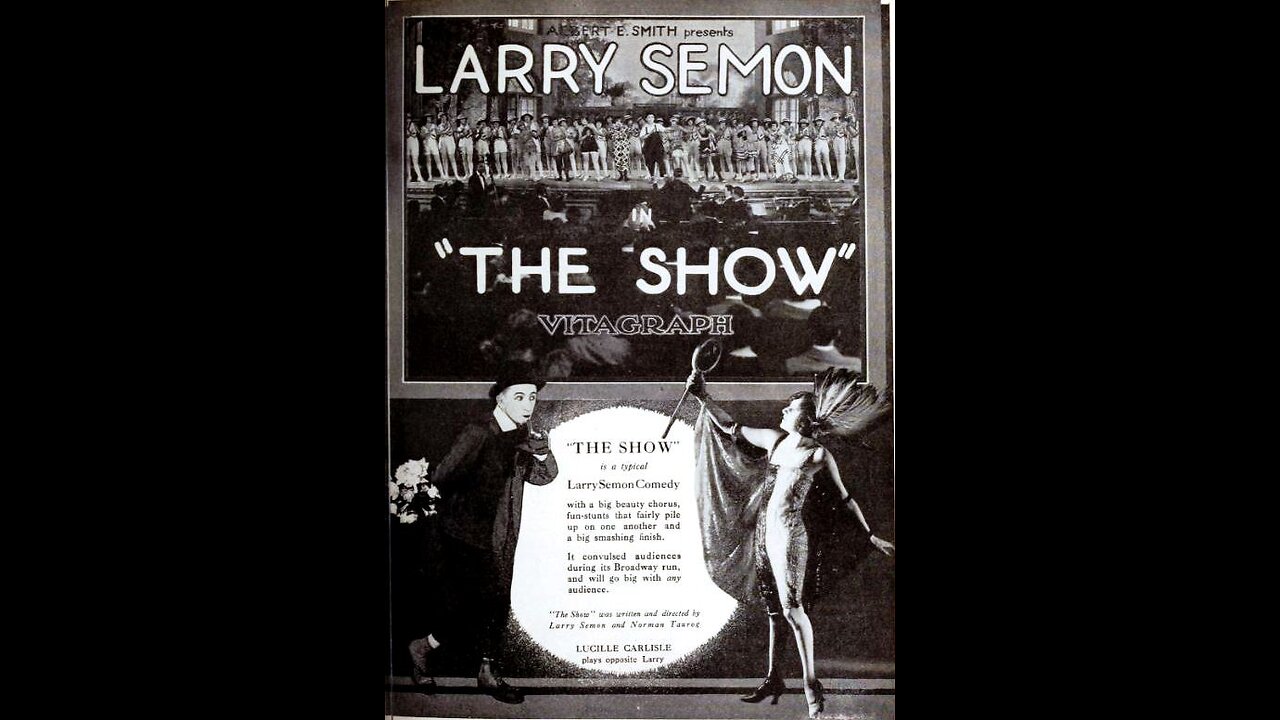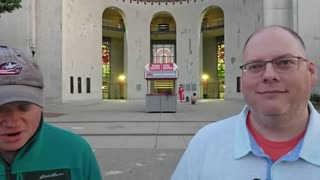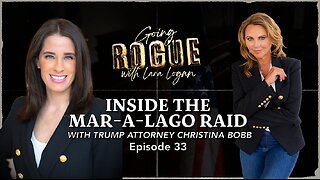Premium Only Content

The Show (1922) by Albert E. Smith, directed by Larry Semon and Norman Taurog, starring Larry Semon
The Show is a 1922 American silent short comedy film that exemplifies the slapstick humor and chaotic energy characteristic of Larry Semon’s work during the silent film era. Produced by Albert E. Smith under the Vitagraph Company of America, the film was co-directed by Semon and Norman Taurog, showcasing Semon’s dual role as both star and creative force. Running approximately 20 minutes, this two-reel comedy blends physical gags, absurd situations, and a touch of dreamlike fantasy, making it a quintessential example of early 1920s silent comedy.
The plot centers on Larry Semon, who plays a harried stagehand working backstage at a bustling theater. In a clever twist, Semon’s character also appears as part of the audience, blurring the lines between performer and spectator and keeping viewers guessing about his dual capacity. The story kicks off with a series of comedic misadventures: Semon steals a bouquet of flowers intended for the theater’s star and presents it to a chorus girl, unaware that a cat has spilled ink over the blooms, setting the stage for visual chaos. His bumbling continues when he mishandles a wind machine at an inopportune moment, unleashing a cloud of black powder that engulfs the stage and auditorium, much to the dismay of everyone involved.
As the narrative progresses, Semon’s character becomes embroiled in a more dramatic subplot. He attempts to thwart a gang planning to rob the theater’s payroll, a heroic effort that goes awry when he’s knocked unconscious. This incident triggers a fantastical dream sequence—a hallmark of Semon’s style—where he imagines himself as a daring hero embarking on a wild chase to recover the star’s stolen jewels. The dream culminates in an exhilarating train chase, featuring impressive stunts such as Semon leaping between moving cars, a testament to his penchant for extravagant, full-scale action. Oliver Hardy appears as a villain in this latter half, adding a familiar comedic foil to the mix, though his role is relatively minor compared to Semon’s spotlight. Upon awakening, Semon finds the crisis resolved, leaving the audience with a classic “it was all a dream” resolution.
The cast includes notable silent-era performers: Frank J. Coleman plays multiple roles (an audience member, a woman with a hat, and a cop), while Jack Miller Jr. appears as a villain. The film’s production reflects Semon’s reputation for extravagance, with real props and elaborate setups—like the malfunctioning wind machine and nitroglycerin-spitting roosters—rather than relying on camera tricks or miniatures. This approach, while costly, aligns with his background as a cartoonist, bringing a larger-than-life, cartoonish quality to the screen.
The Show is a product of Semon’s peak popularity, a time when he rivaled comedy giants like Charlie Chaplin and Buster Keaton. However, it also hints at the excesses that would later strain his career, as his lavish productions often exceeded budgets for short films. Though not as widely remembered today as his collaborations with Stan Laurel or his 1925 feature The Wizard of Oz, The Show remains a fascinating artifact of silent comedy, blending relentless slapstick with a touch of absurdity and daring physicality. Its train chase, in particular, stands out as a highlight, offering a glimpse of Semon’s ability to stage action that rivals modern spectacles, all within the constraints of early cinema.
-
 1:59:29
1:59:29
Tim Pool
4 hours agoIsrael VS Palestine DEBATE, Misfit Patriot VS Rathbone | The Culture War with Tim Pool
108K157 -
 15:53
15:53
Talk Nerdy Sports - The Ultimate Sports Betting Podcast
1 hour agoIt’s Friday, August 30, 2025 and Talk Nerdy Sports is loading up 10 rock-solid bets
4 -
 34:17
34:17
Ohio State Football and Recruiting at Buckeye Huddle
11 hours agoOhio State Football: 14 Bold Predictions for the Buckeyes vs. Longhorns
4.21K -
 1:11:38
1:11:38
Simply Bitcoin
3 hours ago $1.56 earnedNEW DATA: FORGET The CRASH The Bitcoin Supply SHOCK is ACCELERATING | EP 1321
16.6K1 -
 4:22
4:22
Michael Heaver
3 hours agoLabour Make DISGUSTING Decision Against England
7.47K2 -
 1:05:42
1:05:42
Lara Logan
16 hours agoINSIDE THE MAR-A-LAGO RAID with Trump Attorney Christina Bobb | Episode 33
28.3K8 -
 1:38:45
1:38:45
Steven Crowder
5 hours agoAI Celebs Just Scammed Women out of Millions & Premium Interview w/ Patrick Christys
235K180 -
 43:48
43:48
The Mel K Show
3 hours agoMORNINGS WITH MEL K -This Labor Day Celebrate Liberty, Freedom & Family! 8-29-25
23.1K5 -
 59:02
59:02
The Shannon Joy Show
4 hours ago🔥🔥The Butchers At Hilo Benioff Hospital Hawaii - Mom Subjected To Forced C-Section & Abuse🔥🔥
28.1K3 -
 41:26
41:26
daniellesmithab
3 hours agoBetter, Faster, Smarter Access to Government Services
13.1K3